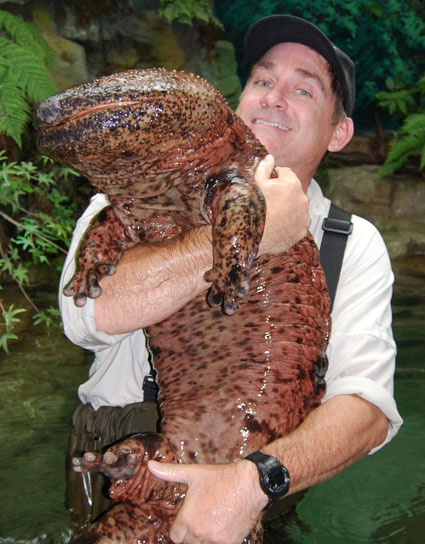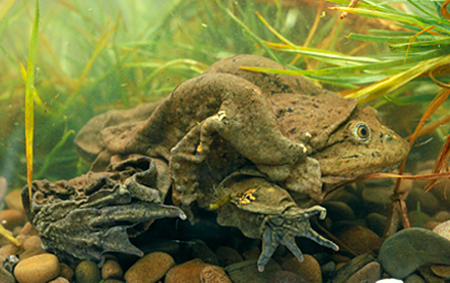WE’VE MOVED! COME AND SEE US HERE YOU BIG SMASHER!
High in the South American Andes sits an epic body of water, many years ago the local tribes saw that it was shaped like a puma pouncing on a rabbit and so named it Lake Titicaca. Years later, deep in its azure waters Victorian naturalists found a rather curious looking frog, they marvelled at this new species poked at its flaps of skin and scratched their learned chins, there was only one name for this froggy fellow Telmatobius coleus – the aquatic scrotum.
Lake Titicaca is an unforgiving place, at nearly 4,000 metres above sea level the Sun is punishing, oxygen is thin and freezing temperatures abound. It’s for this reason that the Lake Titicaca Frog has evolved into something that looks like it should be in a man’s pants, which is surprising as a man’s pants are rarely thought of as an extreme environment. It should also be noted that it being discovered in 1876 it was way before any sort of TV chef, hence the frog is not called Gordonus Ramsiius. Not that we at the proceedings think Gordon Ramsey looks like a nutsack … no …no… no… no… no. It seems the key to the frogs success is that it stays underwater at all times, and those folds and flaps of skin help with the uptake of oxygen from the lake.
For years this fellow has been revered by the locals, who thought the frog could summon rain. They would take a frog, place him in a jar, and leave him at the top of a hill. Of course the frog would scream bally murder, it hadn’t evolved into a scrotum-like frog to sit in jars at the top of hills, he much preferred life at the bottom of a lake where people couldn’t constantly remark on how much he looked like a pair of knackers. Unfortunately the Frogish for ‘get me out of this jar you fools’ sounds a lot like the Quechuan for ‘oh do rain, it would be awfully nice’. Thankfully sometimes the rains would come, and as the jar filled with water the frog could slosh out and go back to the bottom of the lake where he felt much less self conscious.
In the 1970’s when Jacques Cousteau visited the lake he reported that the bottom was quite literally swimming with ‘thousands of millions’ of giant frogs, many up to 50cm long. Sadly the days of these behemoth have gone, there are few frogs left and those that are still there rarely get that big . One of the main reasons for their demise is the fad for ‘frog juice’ in nearby Lima. These cosmopolitan forward-thinking erudites think that they can produce an aphrodisiac by skinning a frog alive, mixing it with a bit of honey and some roots, and whizzing it up in a blender. Of course nothing gets me in the mood like watching a frog being skinned alive and blended. In fact I can think of no bigger turn off… apart from Gordon Ramsay… who looks like a nutsack.







